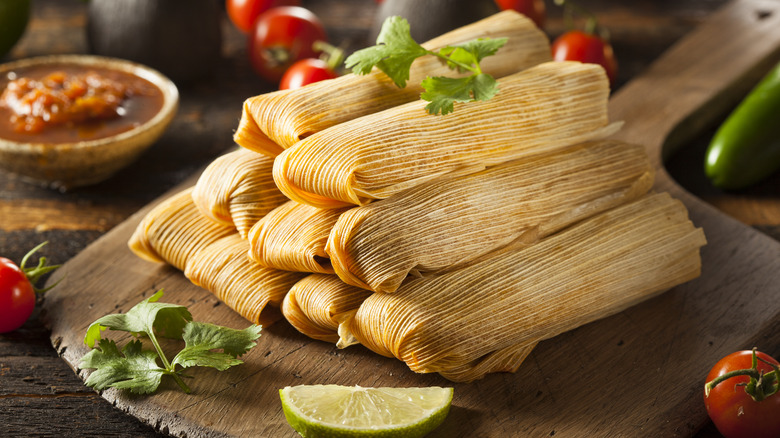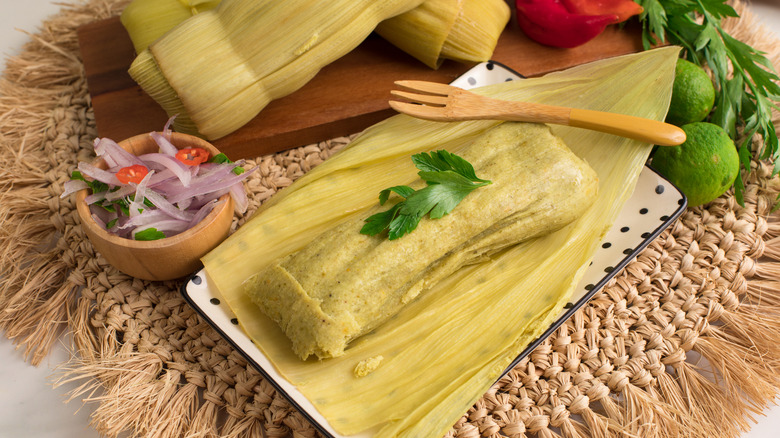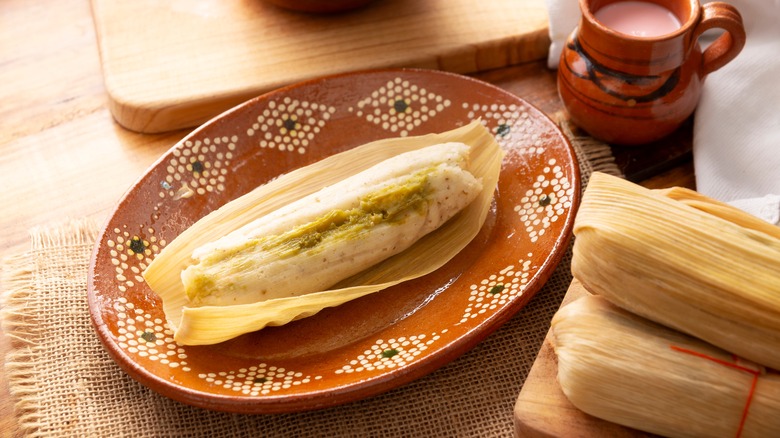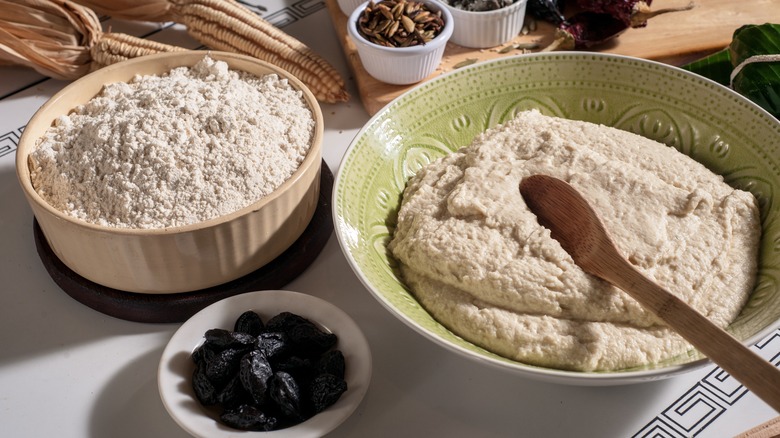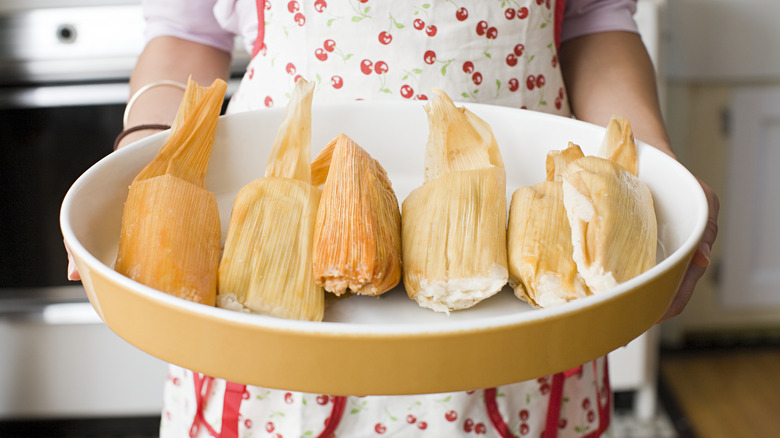4 Tips For Making Perfect Tamales Every Time
Tamales are perfect anytime, day or night. Served savory or sweet, in Mexico they're sold as street food for breakfast, can be enjoyed for lunch or dinner, and can even make a tasty dessert. In Mexican culture, they're an expected meal at celebrations and weddings, and it's common to eat tamales on Día de los Muertos. They are also essential around Christmas time, when families host tamaladas — parties dedicated to making tamales en masse. In the United States, they're considered one of the first dishes that defined Tex-Mex cuisine.
While you can buy tamales by the dozen for your next shindig, it can also be a lot of fun to make them yourself. For those who have never done it before, Food Republic turned to chef Jorge Guzmán — a James Beard Award Finalist, and the chef and owner of Petite León and Chilango in Minneapolis — for some advice and common mistakes to watch out for. Follow his four expert tips to ensure your tamales turn out delicioso every time.
Make tamales vegetarian with coconut oil or butter
Many of the best basic tamale recipes are made with lard. The pig fat provides a rich texture, adds flavor, and helps the masa hold its shape. As a vegetarian alternative, chef Jorge Guzmán suggests butter, and for vegans or anyone avoiding dairy, he recommends coconut oil. Vegetable shortening like Crisco can also be used to keep the tamales fluffy.
Making tamales with vegetable oils can, however, result in dense or dry masa. Prevent this by ensuring the masa dough is sufficiently moist, using less of it inside the husk, and avoiding overcooking.
Masa is ready to use when it passes the float test
To achieve light and tasty tamales, the corn masa needs to be properly aerated, have enough liquid, and be well-mixed with fat. It's ready when it resembles cake batter and is slightly sticky.
To skip the guesswork, Jorge Guzmán's advice is to use the tried-and-true float test. He says you should always "take a little piece and put it in ice water." Then, "if it sinks, you need to either whip more air into it or add more fat until it floats."
The secret for moist tamales is hydration
Moisture is key when cooking tamales. Without enough liquid, they'll crumble like sand and taste just as dry. Ensuring that the masa is thoroughly hydrated before wrapping it in corn husks or banana leaves is as important as making sure you don't run out of water when making the tamales. Usually, this is done by steaming, but you can also cook tamales without a steamer basket.
Chef Jorge Guzmán's tip is to "let your masa dough rest for at least ½ hour before you add it to your whipped fat." This, he says, is "so it properly hydrates." You can use water, broth, or stock.
Add baking powder for light and fluffy tamales
To add flavor, don't forget to season your masa dough with enough salt. If using broth or stock that's already salty, adjust accordingly. Likewise, keep your masa less salty than your filling to avoid overpowering it.
Chef Jorge Guzmán also recommends using baking powder "to help make your tamales less dense." Add it before mixing the masa into the fat, or directly into the fat during the whipping stage. Just like baking powder helps cakes and cookies rise, it also gives tamales an exceptionally fluffy texture.

